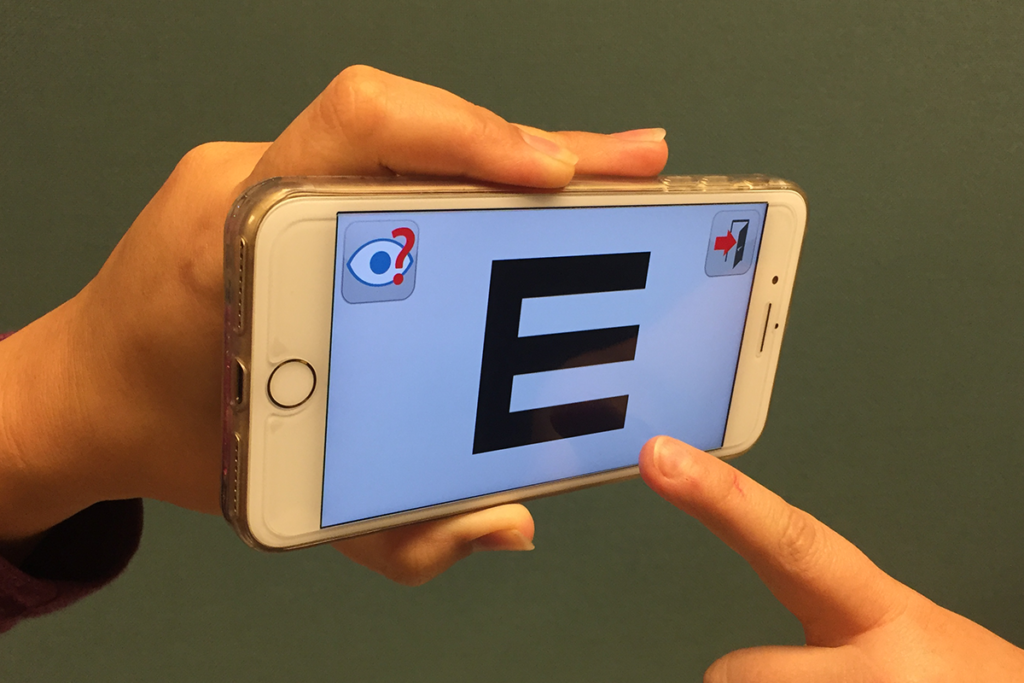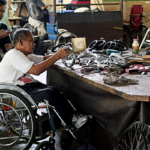An estimated one billion people around the world have a disability, of whom 93 million (almost one in ten) are children (WHO, 2011). Many low and middle-income contexts, even those with the political will to provide educational support to children with special learning needs, often lack sufficient processes and systems to do so.
While overarching teaching strategies, such as universal design for learning, response to intervention, and differentiated instruction, can help all children learn, teachers who understand each child’s needs, including the needs of children with disabilities, can better help them learn. In short, identification, coupled with targeted follow-up, is essential to promoting quality education for all. With this goal in mind, what can education and health systems – and their development partners – do to support schools and teachers to identify and better support children with disabilities?
In this blog post, we share some favorite resources – sometimes standardized screening instruments, sometimes experimental research that might yield new instruments in the future – we came across during our review.
Background
Disability and poverty are deeply interrelated factors, and many with disabilities face rampant exclusion from education, the workforce, and social and civic participation (Rohwerder, 2015). These issues demand – and increasingly receive – attention at the highest levels: the Sustainable Development Goals (SDGs) insist on inclusion, many governments have developed or are developing inclusive policies, and many donors require greater inclusion in development programming. These efforts include policies and programs involving the identification of disabilities.
Without identification, a child may struggle to learn to read due to visual acuity problems that are easily correctable with proper eyeglasses. Children with “invisible” disabilities, such as cognitive or emotional impairments, are particularly likely to go unidentified and may be branded as struggling learners, possibly discouraging interest in school, disincentivizing continued investment in education by resource-strapped families, and ultimately leading to school dropout. Indeed, an estimated 90% of children with disabilities are out of school in developing countries (source).
In order to test, and ultimately publicly offer a toolkit that could facilitate screening in schools, our first step was to better understand what screens are available. To do this, we reviewed instruments available for use with school-age children (primary ages and up).
Specifically, we sought approaches that met five criteria.
Approaches (1) that measure different types of functioning accurately, i.e., with decent validity, (2) that have good reliability, i.e., that provide consistent, reproducible measures of different types of functioning, (3) that are open-source or inexpensive and, therefore, more feasible to introduce into low-resource contexts, and (4) that could be administered by adults with basic training rather than medical or developmental specialists as specialists in many low- or middle-income contexts are in short supply. Finally, (5) we focused specifically on direct tests of functionality rather than assessments based on self-reports or caregiver or teacher perceptions of a child’s functioning, which may or may not accurately reflect a child’s ability.
To identify screening instruments, we searched Google, Google Scholar and PubMed; built on earlier reviews; and drew on recommendations from other organizations, including Light for the World. Below we present our favorite resources, focusing on the balance of functionality and cost.
Vision screens
Peek Acuity, an Android app originally developed by the London School of Hygiene and Tropical Medicine and the International Centre for Eye Health, has been used in a number of low and middle-income countries, including in school screenings in Botswana, India and Kenya. Researchers validated the app by comparing scores from the app to those from conventional vision screening approaches and determined reliability by checking that the assessment repeatedly yielded similar results (Bastawrous, et al., 2015). In addition to providing a measure of visual acuity, the free app offers a vision simulation based on the screening score, so a teacher or parent can get a sense of what the world looks like through the child’s eyes.
These guidelines and teachers’ handbook by Sightsavers and several other organizations provide comprehensive, accessible guidance on developing school-based eye-health programs. The manuals introduce approaches for teachers to screen for common eye diseases and visual acuity, much like Peek Acuity does, but using a simplified version of a traditional paper-based eye chart. A number of studies have looked at having teachers conduct vision screenings using this or similar approaches and have concluded that teachers can often conduct valid basic screenings (Sharma, et al., 2012), sometimes as well as health care workers (Reddy and Basset, 2017) though not always (OstadiMoghaddam, et al., 2012). In short, vision screening benefits from low-cost options that make it more immediately feasible to introduce into development programs, especially by comparison to other domains explored below.
Hearing screens
While there are a number of app-based programs for hearing screening, not all have been validated and, of those that have, not all would be appropriate for wide-scale use in classrooms given their expense or the usability of screening results (Bright and Pallawela, 2016). One option that stands out for use with school screenings is hearScreen, which has been used in more than 20 countries, including many low and middle-income countries. To determine the validity of this Android app, researchers screened children with the app and through established audiometry techniques and, after comparing results between the two methods, concluded that the app performs similarly to accepted methods (Mahomed-Asmail, et al., 2016). Although the app is not free and requires a subscription plus the one-time expense of headphones, it costs an estimated 70% less than traditional approaches to hearing screening (source).
Voice tests offer a technology-free alternative for hearing testing. In this low-cost approach, testers use their voices for simple prompts, varying the loudness, and see whether children respond accurately. Hesperian and WHO offer guidance on this style of testing, which may make hearing screening achievable where no other options are available. One version of this approach – the whispered voice test – has been shown to provide accurate hearing screening results, though ones that tend to be less sensitive for children than adults (Pirozzo, et al., 2003). The reliability, however, from tester to tester has been fraught in some studies (ibid.), with one study finding that less experienced testers tended to whisper more softly than more experienced ones (McShefferty, et al., 2013). One consequence is that achieving accurate, consistent results with voice tests, which are usually conducted by health care workers, requires more extensive training than other screening techniques.
At present, there is a tradeoff among cost, accuracy, and training investment for hearing screenings largely because the equipment needed for valid, easy-to-administer screening tests, such as special headphones and calibrated sound systems, are pricey. While the cost of accurate screenings has dropped considerably with resources like hearScreen, such tools remain prohibitively expensive for resource-strapped education systems or programs hoping to conduct screenings at scale.
Despite the challenges, providing universal screening for vision and hearing is a critical first step in addressing any learning challenges children may be experiencing. Moreover, screening for vision and hearing should occur at regular intervals and, like with all tests of functionality, screening programs should help connect parents of children with potential problems to evaluation services, helping ensure that additional assessment happens and children receive any interventions or support needed (Wang, et al., 2011).
Cognitive skills screens
At present, few open-source tools exist to assess learning difficulties that could be readily adapted to low and middle-income school settings despite the importance of this domain. These largely “hidden” disabilities or difficulties may pose serious challenges to children’s learning when unidentified. While these often go undetected, especially in low and middle-income contexts, cognitive impairments are common, with estimates of intellectual disability ranging from 8.7 to 36.8 per 1,000 children in the United States and the difference in estimates dependent largely on how/whether mild intellectually disability is defined and included (source).
As an example of research that could be built on, one study on Malawi adapted tests of cognition – as well as motor skills – that could be administered to groups of pupils in early primary grades on tablets. Although these tools are not publicly available at present, FHI 360 is collaborating with Dr. Nicola Pitchford, a researcher from the project, to pilot a toolkit that includes updated versions of these (and other) tools to be shared in the public domain. Some of these will target working and short-term memory, which is crucial to learning because learning problems can often be linked back to memory issues (Alloway and Alloway, 2010).
Also of note, recent guidance advises a tiered approach to screening that tests for learning challenges, where available through education and health systems, be administered only after reviewing classroom performance. It cautions that, while all children should be screened for vision and hearing, children who are performing well academically do not necessarily need screening for learning difficulties.
Motor skills screens
While this helpful World Bank review covers developmental assessments, including motor skills assessments, for young children, there are limited options available to screen for motor skills among primary school age children. While some tests do exist – like the Bruininks-Oseretsky Test of Motor Proficiency; the Movement Assessment Battery of Children, which has been adapted for Kenya; and the Test of Gross Motor Development, the ones we identified were not open-source and often expensive to purchase.
At the same time, existing tests may provide more nuance than is needed for basic screenings, where a simple pass/fail score could help determine whether additional, more formal evaluation could be useful, leaving room for growth in this domain. It is also possible in smaller classes where teachers can attend more closely to students that screenings for motor skills, which tend to be more visible than other functional challenges, could happen more informally.
Language and communication screens
While we did not find any open-source screens that test language or communication skills, there is new research and some resources that could be adapted in this area. Researchers have experimented with modifying the widely used (though not low-cost) Boston Naming Test as the Kilifi Naming Test in Kenya (Kitsao-Wekulo, et al., 2017), with results demonstrating strong reliability but mixed validity and pointing to the need to establish context-specific norms for these sorts of tests when adapting for different languages and cultural settings. Additionally, the early grade reading assessment (EGRA), particularly oral tests related to phonological awareness, could serve as a resource to assess the building blocks of language skills.
Applying these resources
Drawing on promising tools identified in the review, FHI 360, along with Dr. Nicola Pitchford from the University of Nottingham, plans to test a toolkit to screen for different types of functional disabilities that, if effective, could provide a valuable resource for school screenings in contexts where screening is not widely available. A key goal of the study will be to test the validity and reliability of the instruments on the ground, so we know more about the toolkit’s risk and effectiveness, which is extremely important given dangers of misidentifying disabilities to the well-being of children. We will share more about the approach to testing the toolkit in another blog post.
Photo caption: Sample vision screening app test
Photo credit: FHI 360



